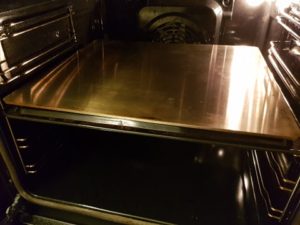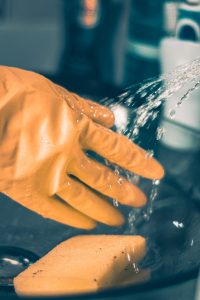Discover the secret to pizzeria-quality pizza at home, no wood-fired oven is required!
An authentic Neapolitan pizza should be baked in a wood-fired oven, but unfortunately, that’s not something we all have at home. Are there any alternatives? Yes, indeed! The perfect pizza crust you find in restaurants can be replicated at home in your own kitchen. All you need is a pizza baking steel!
Key takeaways
- A pizza baking steel is the ultimate upgrade for your home oven. It acts like the floor of a
pizza oven , allowing you to bake your pizza directly on it for a crispier crust. - The steel retains and transfers heat rapidly, speeding up the baking process.
- By using the Broiler Method, you can reduce the baking time to just 3 minutes and achieve perfect Neapolitan leopard-spotting in a regular oven.
What is a pizza baking steel?
A baking steel, also known as a
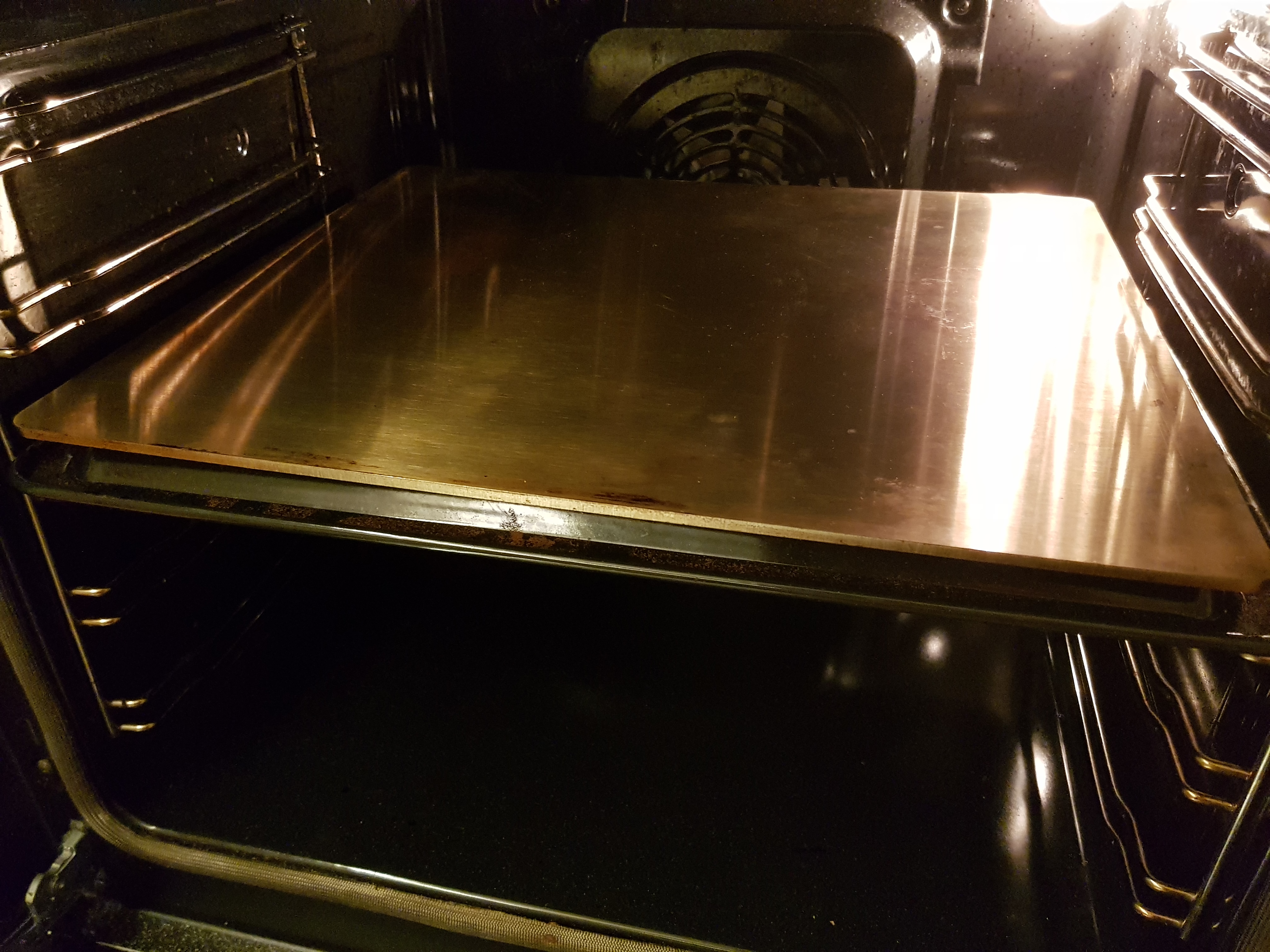
Traditionally, pizzas are baked directly on the scorching surface of a wood-fired oven. Achieving the right balance between baking the top and bottom of the pizza is crucial for a crunchy crust while maintaining a light and airy interior. The speed of baking is also important; a prolonged baking time can dry out the crust. Yes, it will become crispy, but it will also be dry.
The reason your homemade pizza might not measure up to that of your local pizzeria is likely due to your oven. The challenge with a regular home oven is twofold: it doesn’t reach high enough temperatures, and it lacks a hot surface to properly bake the bottom of the pizza. This often results in:
- Longer baking time
- Less oven spring, resulting in denser and dryer crust
- Less crispy bottom without any learning
That’s where the baking steel comes into play!
When you preheat the metal surface, it absorbs a significant amount of heat. Its high conductivity means it effectively transfers this heat when you bake your pizza directly on it. Baking the pizza on the steel mimics the effect of a
Does a baking steel make better pizza?
A baking steel makes a significant difference!
Over the past few years, I’ve experimented with various baking steels, and I’ve found that baking pizza directly on these hot surfaces not only reduces the baking time by several minutes but also results in a crispier bottom.
But how does a baking steel stack up against a traditional pizza stone?
Pizza baking steel vs pizza stone
I was initially hesitant about getting a baking steel, not due to doubts about its effectiveness, but because it costs significantly more than a ceramic pizza stone.
For years, I used ceramic pizza stones, which performed pretty well, but came with two major drawbacks:
- A pizza stone is challenging to clean due to its porous nature, which allows it to absorb moisture such as sauce and olive oil.
- They crack easily under high heat or sudden temperature changes.
I’ve lost count of how many pizza stones I’ve gone through, but the number is definitely in the double digits. Some had to be discarded because they became too dirty and difficult to clean, while others cracked during baking.
I later discovered that higher-quality pizza stones made from cordierite are much less likely to crack, although their prices are more comparable to that of a baking steel.
Pizza Stone
Ceramic stones can significantly improve your pizza baking, leading to a crispier crust. They’re also great at retaining heat, which is perfect if you’re planning to bake multiple pizzas one after another.
However, the main challenge you might face with a pizza baking stone is cleaning it. Its uneven surface can be tough to clean thoroughly since it absorbs sauces, fats, and other stains, potentially causing smoke and unpleasant odors during use. As a result, you might find yourself needing to replace the stone from time to time. Even with careful use, spills happen, and you might end up replacing your pizza stone once or twice a year.
Additionally, cheaper ceramic stones are susceptible to cracking due to thermal shock. To avoid this, it’s crucial to preheat the pizza stone gradually and let it cool down completely after use, preventing any sudden temperature changes.
For more detailed insights on why pizza stones crack and tips on how to prevent it, check out our guide about preventing pizza stone cracking.
Pizza baking steel
A baking steel transfers heat more efficiently than a baking stone, which means you’ll enjoy faster baking times and a crispier crust on your pizzas. Plus, it’s incredibly durable. If you accidentally drop your baking steel, you’re more likely to damage the floor than the steel itself!
With proper care, your baking steel can last a lifetime, a stark contrast to the more fragile pizza stone. And when it comes to cleaning, you’ll find it much simpler since the steel doesn’t absorb moisture the way stone does.
The main drawback of a baking steel is that it cools down during baking due to the rapid heat transfer. This means you’ll need to reheat the steel when baking multiple pizzas for consistently quick baking times and that perfectly crispy crust.
Pizza stone vs. baking steel comparison
| Feature | Pizza Stone | Baking Steel |
|---|---|---|
| Excellent, faster, and more even | Good, but slower than steel | Excellent, faster and more even |
| Durability | Prone to cracking and breaking | Extremely durable, virtually indestructible |
| Maintenance | Difficult to clean, absorbs moisture | Easy to clean, doesn’t absorb moisture |
| Baking time | Longer | Shorter, more efficient |
| Crust quality | Crispy crust possible | Consistently crispier crust |
| Lifespan | May need frequent replacement | Lifetime investment |
| Cost | Generally cheaper, varies by material | Higher initial cost, but cost-effective in the long run |
| Thermal Shock | Susceptible to cracking from thermal shock | Resistant to thermal shock |
Deciding whether a baking steel is “worth it” depends on your priorities in pizza-making. If you value efficiency, durability, and consistently crispy crusts, a baking steel is an excellent investment. Its superior heat transfer capabilities not only reduce baking time but also ensure a perfectly crispy bottom.
Unlike a pizza stone, you won’t have to worry about the steel cracking or absorbing unwanted flavors and odors, making it a more hygienic option. While the initial cost is higher compared to most pizza stones, the durability and lifetime value of a baking steel make it a cost-effective choice for serious pizza enthusiasts. In conclusion, if you’re passionate about achieving pizzeria-quality pizza at home, a baking steel is undoubtedly worth considering.
Is a pizza steel worth it?
Investing in a baking steel is undeniably worth it! The unmatched heat conductivity and durability transform your regular oven into a pizzeria-grade powerhouse, drastically reducing baking times while ensuring a consistently crispier crust.
What sets the baking steel apart is its ability to simulate the intense heat of a wood-fired
In short, a baking steel is not just an oven accessory, it’s an upgrade to your pizza-making game, making every pizza night a potential gourmet experience, regardless of the season.
Picking the right pizza steel
When choosing the right pizza baking steel for your kitchen, there are several key features to consider to ensure you get the best possible results. Here’s what to look for:
- Thickness: A thicker steel provides better heat retention and more consistent heat distribution. Aim for a thickness of at least ¼ inch.
- Size: Ensure the steel fits comfortably in your oven. Standard sizes are usually sufficient, but measure your oven’s interior to be sure.
- Material: Look for high-quality, food-grade steel. This ensures safety, durability, and superior performance.
- Price: Don’t overpay for a baking steel it’s essentially a slab of steel.
When it comes to purchasing your baking steel, there are numerous online retailers and kitchenware stores that offer a variety of options.
Top pick: the best pizza baking steel
My top choice for an all-around excellent pizza experience is the Conductive Cooking Square
Investing in the right
If you want to try your new
How to use a pizza steel to make amazing pizza at home
Baking pizza
While a traditional wood-fired
A pizza peel is an essential tool for safely transferring your pizza onto the scorching steel. If you don’t have one yet, now is the time to invest. For tips on selecting and using a
- Place your baking steel in the middle of the oven and preheating at 500°F (260°C), or as high as it will go. The hotter, the better!
- Let the baking steel preheat for at least 45 minutes to 1 hour.
- Prepare your pizza and launch it directly onto the hot steel using a
pizza peel . - Let the pizza bake for 5-8 minutes.
- When making multiple pizzas, allow your baking steel to reheat a few minutes before baking the next pizza.
For those seeking an extra-crispy crust, try the double-bake method: begin by baking the pizza dough with sauce only for five minutes, then cool it on a rack. After adding cheese and toppings, bake it for another five minutes on a reheated steel. This technique ensures a crunch that’s hard to beat!
The Broiler Method: How to Make Perfect Neapolitan pizza
This method leverages the broiler, or grill function, of your oven to superheat your baking steel, enabling you to craft perfect Neapolitan pizza right in your kitchen.
- Place the baking steel on the top oven rack, ensuring it’s about 2-3 inches from the broiler, to get as close to the intense heat of a wood-fired oven as possible.
- Preheat your oven at the hottest setting for at least 45 minutes to 1 hour.
- Just before sliding your pizza onto the steel, open the oven door briefly to let out some heat, then switch to the broiler setting. This ensures the broiler remains active during the baking process.
- Cook your pizza for 3-5 minutes, or until you see the characteristic “leopard spotting” on the crust, indicative of an authentic Neapolitan pizza.
Tip: Keep a close eye on your pizza during baking when using the broiler. It’s very effective but can cause the pizza to burn quickly!
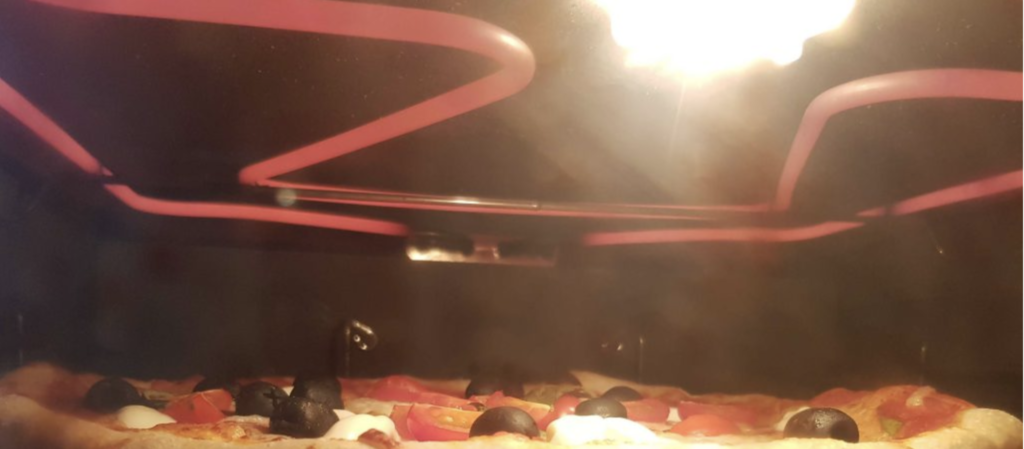
Cleaning Your Pizza Steel
Properly cleaning your
- Let It Cool: Safety first! Allow your
pizza steel to cool down completely in the oven before handling it to prevent burns. - Scrape Off Residue: Use a bench scraper or metal spatula to gently remove any large, burned-on bits of flour, cheese, or sauce.
- Scrub Gently: For smaller particles, a sponge or nylon brush works well without damaging the steel’s surface.
- Tackle Stubborn Stains: If residue persists, consider using steel wool or EarthStone Cleaning Block (affiliate link) for more abrasive cleaning. Avoid using soap, as it can interfere with the steel’s seasoning.
- Dry Thoroughly: Once clean, dry your
pizza steel with a kitchen towel to remove any moisture, which helps prevent rust. - Store Properly: Keep your
pizza steel in a dry, non-humid area to further protect against rusting.
For a more detailed guide on cleaning your
Seasoning your pizza baking steel
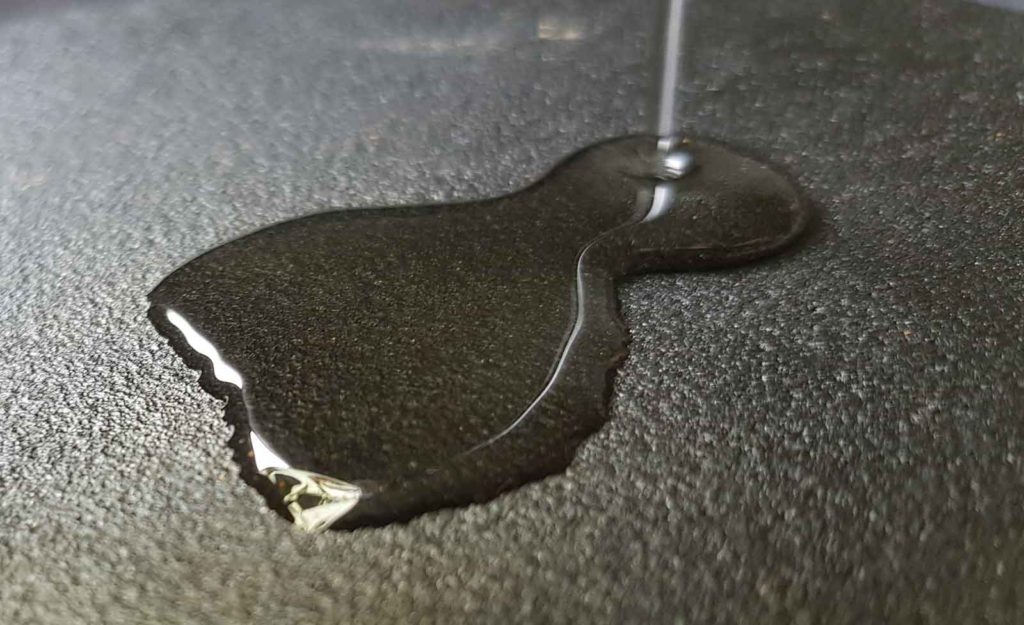
Like a cast-iron skillet, your pizza baking steel also benefits from seasoning. This process not only guards against rust but also improves its resistance to sticking. For seasoning, it’s best to use an oil with a high smoke point, like flaxseed oil. First, ensure your steel is clean, then lightly coat it with the oil, wiping off any excess with a paper towel until only a thin, even layer remains. Place your steel in a cold oven and set it to 200°C (400°F) for an hour, allowing it to heat gradually. After the hour, turn off the oven and let your steel cool down inside.
If your baking steel didn’t come pre-seasoned, you’ll want to season it before its first use. To maintain its condition, re-season it every few times you use it.
You’ll notice your
Related
- Is Your Pizza Dough Too Dry? Here is How to fix it! - June 10, 2024
- The Ultimate Guide to the Pizza Dough Windowpane Test - June 8, 2024
- The Ultimate Guide to Autolyse Pizza Dough - June 7, 2024

